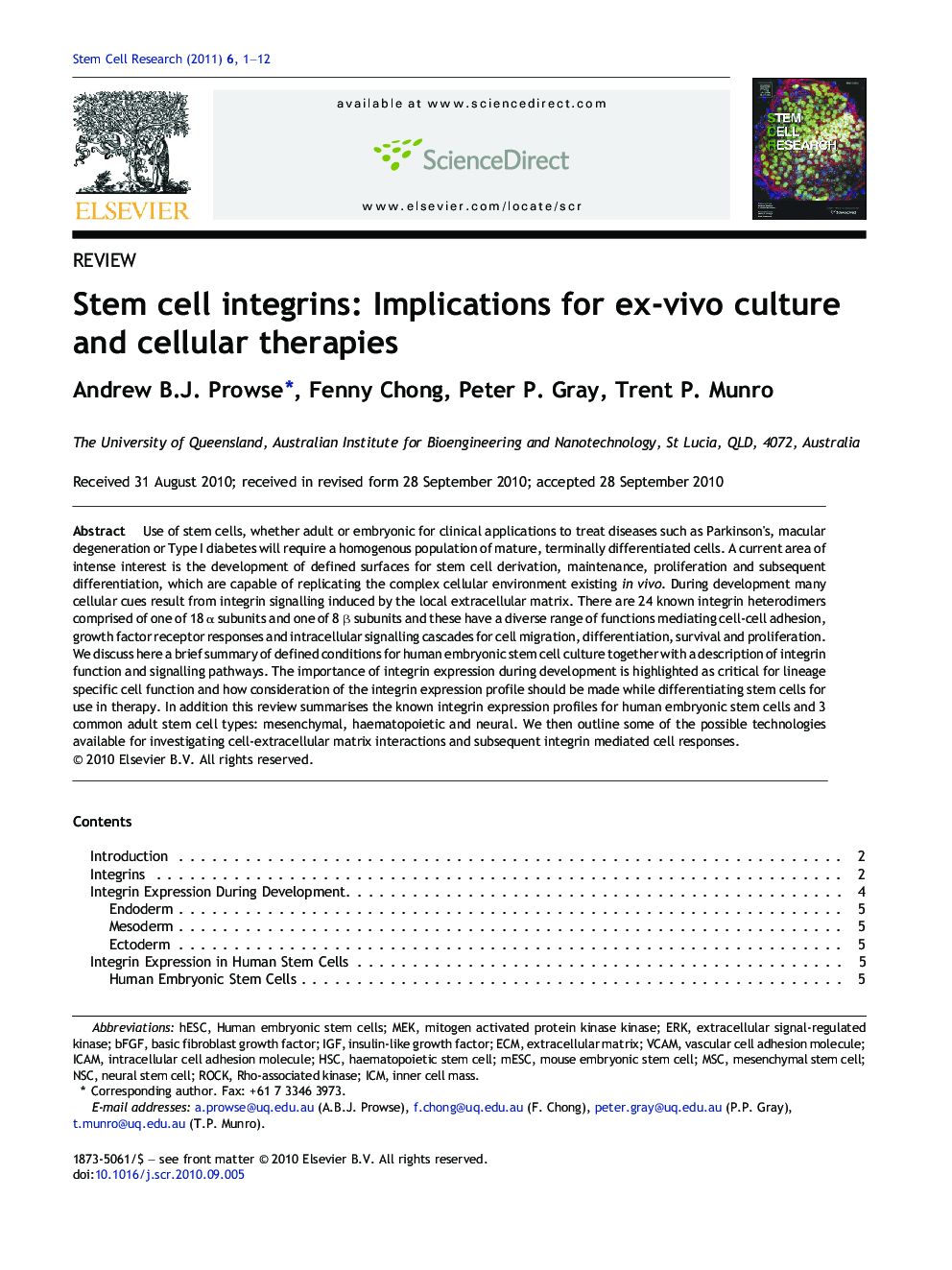| Article ID | Journal | Published Year | Pages | File Type |
|---|---|---|---|---|
| 10891344 | Stem Cell Research | 2011 | 12 Pages |
Abstract
Use of stem cells, whether adult or embryonic for clinical applications to treat diseases such as Parkinson's, macular degeneration or Type I diabetes will require a homogenous population of mature, terminally differentiated cells. A current area of intense interest is the development of defined surfaces for stem cell derivation, maintenance, proliferation and subsequent differentiation, which are capable of replicating the complex cellular environment existing in vivo. During development many cellular cues result from integrin signalling induced by the local extracellular matrix. There are 24 known integrin heterodimers comprised of one of 18 α subunits and one of 8 β subunits and these have a diverse range of functions mediating cell-cell adhesion, growth factor receptor responses and intracellular signalling cascades for cell migration, differentiation, survival and proliferation. We discuss here a brief summary of defined conditions for human embryonic stem cell culture together with a description of integrin function and signalling pathways. The importance of integrin expression during development is highlighted as critical for lineage specific cell function and how consideration of the integrin expression profile should be made while differentiating stem cells for use in therapy. In addition this review summarises the known integrin expression profiles for human embryonic stem cells and 3 common adult stem cell types: mesenchymal, haematopoietic and neural. We then outline some of the possible technologies available for investigating cell-extracellular matrix interactions and subsequent integrin mediated cell responses.
Keywords
ECMHSCIGFintracellular cell adhesion moleculeNSCVCAMbFGFICAMICMmESCMSCERKhESCMitogen activated protein kinase kinaseInner cell massMouse embryonic stem cellhaematopoietic stem cellhuman embryonic stem cellsNeural stem cellMesenchymal stem cellbasic fibroblast growth factorInsulin-like growth factorExtracellular matrixMEKvascular cell adhesion moleculeextracellular signal-regulated kinaseRho-associated kinaseRock
Related Topics
Life Sciences
Biochemistry, Genetics and Molecular Biology
Biotechnology
Authors
Andrew B.J. Prowse, Fenny Chong, Peter P. Gray, Trent P. Munro,
